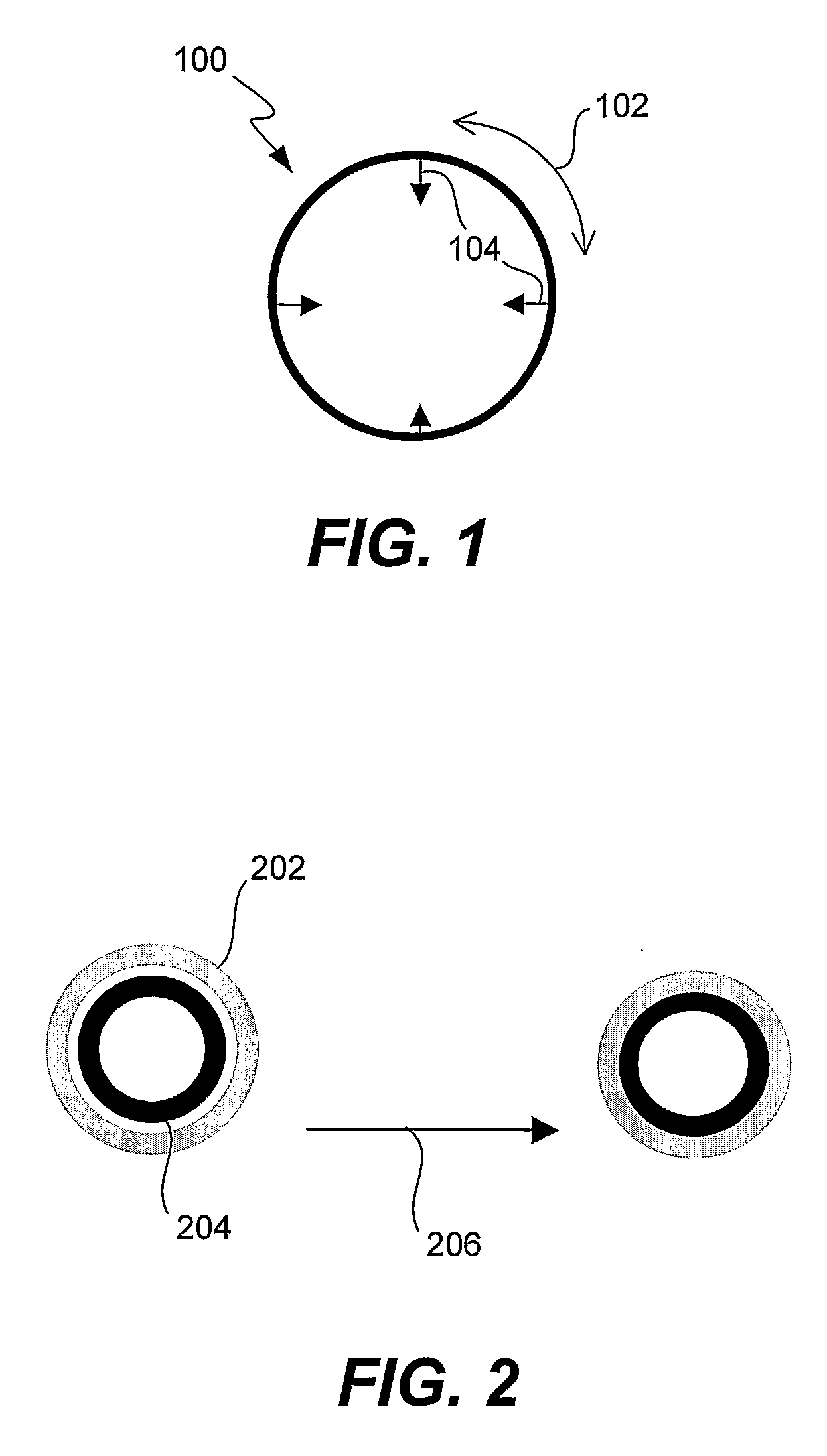Joined concentric tubes
a technology of concentric tubes and joints, applied in the direction of cell components, sustainable manufacturing/processing, final product manufacturing, etc., can solve the problem of inability to meet the requirements of tubular production, and achieve the effect of facilitating tubular production and facilitating joining
- Summary
- Abstract
- Description
- Claims
- Application Information
AI Technical Summary
Benefits of technology
Problems solved by technology
Method used
Image
Examples
example
[0053]The following example is provided to illustrate and provide structural and performance details for a specific embodiment of the present invention. The example is provided to exemplify and more clearly illustrate aspects of the present invention and is in no way intended to be limiting.
[0054]The method for achieving the structure presented in FIG. 4 will be described. In this case, the internal tube comprised a porous metal support layer (internal CC), internal electrode, and dense YSZ electrolyte. The external electrode was applied as a paint to the internal tube before inserting the internal tube into the external tube. The paint consisted of YSZ powder, aqueous acrylic binder, and polymethyl methacrylate pore former particles. The external tube (external CC) was debinded, bisque fired, and slipped around the internal tube prior to sintering the two tubes together. During sintering, the intimate contact between the external electrode and external CC that is evident in FIG. 4 ...
PUM
| Property | Measurement | Unit |
|---|---|---|
| Particle size | aaaaa | aaaaa |
| Fraction | aaaaa | aaaaa |
| Length | aaaaa | aaaaa |
Abstract
Description
Claims
Application Information
 Login to View More
Login to View More - R&D
- Intellectual Property
- Life Sciences
- Materials
- Tech Scout
- Unparalleled Data Quality
- Higher Quality Content
- 60% Fewer Hallucinations
Browse by: Latest US Patents, China's latest patents, Technical Efficacy Thesaurus, Application Domain, Technology Topic, Popular Technical Reports.
© 2025 PatSnap. All rights reserved.Legal|Privacy policy|Modern Slavery Act Transparency Statement|Sitemap|About US| Contact US: help@patsnap.com



